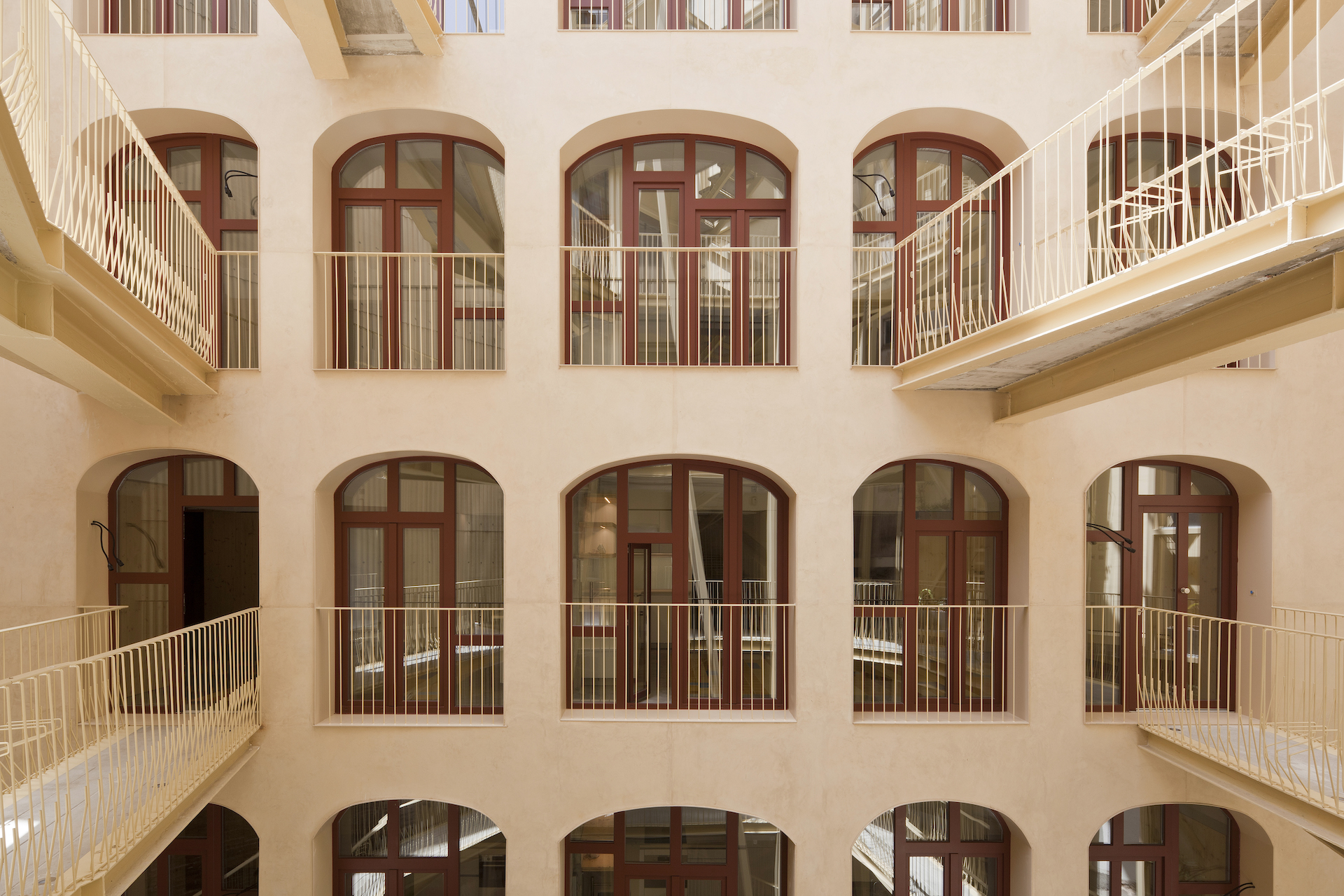La Carbonería, a humble 1860’s collective housing estate in Barcelona, is the oldest building of the seminal Cerda’s Eixample neighborhood, easy to identify by its iconic square urban grid. The Eixample, home to most of Gaudi’s works, is the XIXth century enlargement that paved the city’s way to an urban and architectural success that lasts up until today.
In the pursuit of sustainability, the revaluation of history as well as past social and political conflict had as much impact on the material qualities and performance of our design as the energy simulations we did with our sustainability expert.
The original stairwell of the building had been demolished by its previous owner following the eviction in 2014 of the squatters that had occupied it since 2008. Also, the Town Hall had catalogued the building recently, and, with this protection, it also imposed the obligation to recover the facade that was supposed to look to the never-built ghost boulevard, which however faced now two party walls meeting at a 90º angle barely ten meters away at its further point.
Placing the stairwell and elevator in this furthest corner allowed us to unite the desires and needs of the different actors in the process in a more valuable and sustainable solution for all: The facade that explained Barcelona’s enlargement project and its history has been made available for view from the stairwell and walkways and have become part of the local daily life; the small patio is now a tridimensional public space for the neighbours, a more interesting view from their larger windows than the original party walls; and one more apartment could fit in the space vacated by the old stairwell, which helped justify the more complex solution plus it has increasead a much needed housing density in this desirable area of the city.

